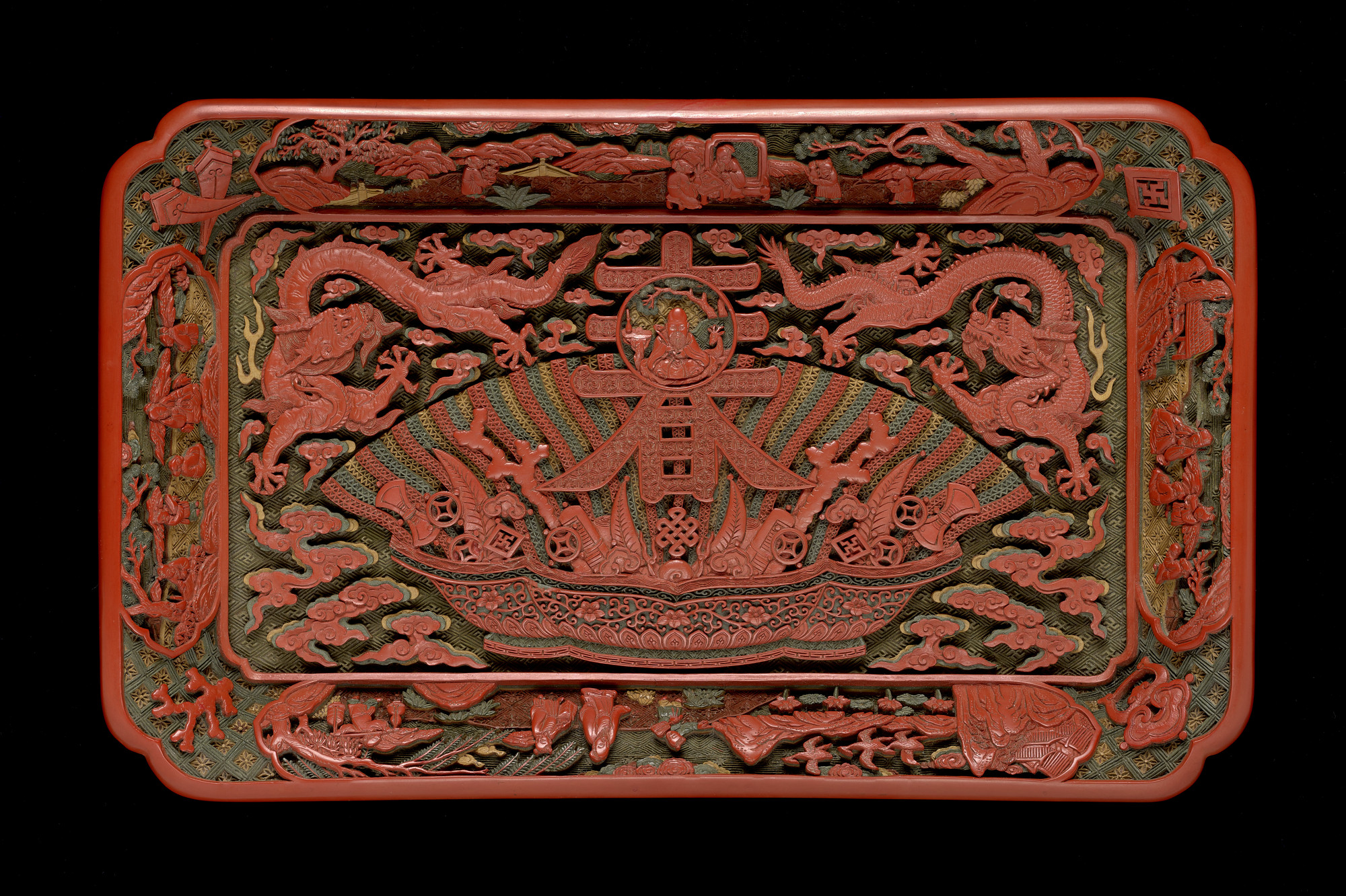Lacquer in the Royal Collection
Exquisite examples of Japanese, Chinese and Indian lacquer

Lacquer is made from the sap of a tree found in China and Japan. It was traditionally painted onto objects made from wood or cloth to make them water-resistant. The lacquer was usually applied in numerous layers, and if these were of differing colours, the piece could be decorated by carving in such a way as to reveal their variety. Dishes, bowls and other forms bear a great variety of designs, notably mythical creatures and figures.
On 20 April 1661, Samuel Pepys recorded in his diary that he saw in James, Duke of York's closet,
among other things two very fine chests covered with gold and Indian vanish, given him by the East Indy Company of Holland.
Samuel Pepys
This love of cabinets and screens created from imported lacquer (usually described as 'India' at this date), was a taste retained well into the eighteenth century. The popularity of this style of decoration was demonstrated at Buckingham House in the 1760s, where Queen Charlotte's Breakfast Room was decorated with European lacquer panels in imitation of Japanese lacquer. At Frogmore House, this style was developed by Charlotte's daughter, Princess Elizabeth, who painted the gold and black lacquer panels of the 'Red' Japan Room herself.
In 1897 Prince Komatsu Akihito (1846–1903) attended the celebrations for the Diamond Jubilee of Queen Victoria, and following the Anglo-Japanese Alliance in 1902, contacts between the two imperial families grew closer. As a result of visits by several Japanese princes, many gifts of contemporary lacquer entered the collection, among them cabinets and boxes by such leading artists as Akatsuka Jitoku (1871–1936) and Shirayama Shosai (1853–1923).
The Chinese lacquer pieces in the collection reveal a slightly different picture. The first significant works to enter the collection are the gifts presented by the Qianlong Emperor (1711–99) to Lord Macartney on behalf of George III during his Embassy of 1792–4. These include a number of red lacquer boxes, many bearing the reign-mark of the Chinese emperor himself. George IV subsequently sent his agents to acquire works of Chinese lacquer in Paris for his Chinese fantasy interiors first at Carlton House and later at the Royal Pavilion, Brighton. The remainder of the Chinese lacquer wares were largely purchased by Queen Mary, including a number of boxes, tea caddies and games boxes acquired in the 1930s. Some of these were intended to furnish the 'Chinese rooms' at both Sandringham House and Windsor Castle; the remainder were for display at Frogmore House.
In addition to Japanese and Chinese lacquer, there are a number of Indian lacquered shields in the Royal Collection. These were presented to King Edward VII, when Prince of Wales, during his tour of India in 1875–76. In contrast to Chinese and Japanese lacquer (known as 'true lacquer'), Indian lacquer, or lac, was obtained from resin secreted by insects of the lacca family. It was thinner than Chinese and Japanese lacquer and could be dried and stored for later use. In dried form it is known as shellac.
Click on an object below to learn more.







